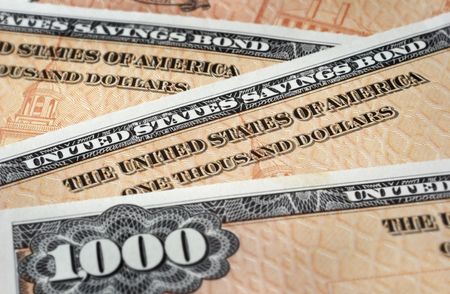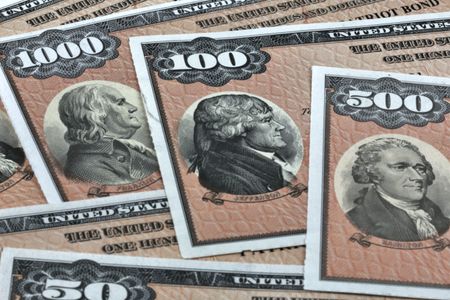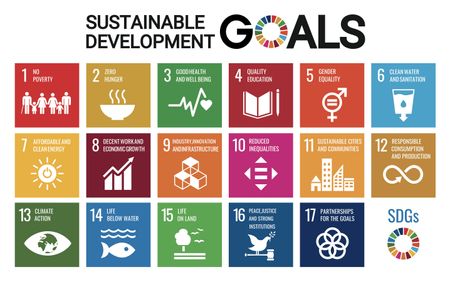Ask the Editors: Real-Life Investing Questions and Guidance
In its March 2010 cover story, Kiplinger’s Personal Finance tackled real-life questions on the minds of many of our readers these days.
In its March 2010 cover story, Kiplinger’s Personal Finance tackled real-life questions on the minds of many of our readers these days. Extending our mission of personal service, we invited readers to send us more questions to be answered in this exclusive online companion package.
How to start investing and saving
I am a recent college graduate and am working in the profession I will be attending grad school for in the future. Because I'm not earning the big bucks (or really even small bucks) yet, I haven't put much thought into saving -- even though I know this is the prime time to begin doing so. How can I save while still keeping enough in my bank account to make necessary purchases? What savings vehicle is most prudent for someone at my stage in life?
Because you're young, any money you set aside now for retirement will have decades to grow for the future. If your employer offers a 401(k), that's the easiest way to get started. If your employer matches your contributions, you just can’t pass it up. That's free money.

Sign up for Kiplinger’s Free E-Newsletters
Profit and prosper with the best of expert advice on investing, taxes, retirement, personal finance and more - straight to your e-mail.
Profit and prosper with the best of expert advice - straight to your e-mail.
If you don't get an employer match, start with a Roth IRA instead. As long as you have earned income for the year, you can invest up to $5,000 in a Roth in 2009 and 2010 (you have until April 15, 2010, to make your 2009 contribution). If you're single, your adjusted gross income for the year must be $120,000 or less to qualify for a Roth ($176,000 or less for couples). You won't get a tax break for your contribution, but you'll be able to withdraw the contribution at any time tax- and penalty-free and withdraw the earnings tax-free after age 59½. This can give you a huge head start on retirement.
If you don't plan to touch the money until you retire, you can afford to put all of the money into stocks. Until you have enough money to build a diversified portfolio, you should start with a global stock fund -- one that invests in both U.S. and foreign stocks. Two good choices, both with a bent toward undervalued stocks, are Oakmark Global 1 (symbol OAKGX) and Dodge & Cox Global (DODWX). Neither levies a sales charge. If you want to tamp down risk further, a global balanced fund -- one that owns stocks and bonds from both U.S. and foreign markets -- may be appropriate. One of the few no-load funds in this category is Fidelity Global Balanced (FGBLX).
Investing in retirement
My wife and I retired in 2007. Our retirement accounts survived the “Great Recession” because I had invested 85% of our money in the Vanguard Total Bond Market Index fund and split the rest between the Vanguard Total International Stock Market Index fund and the Vanguard Total Stock Market Index fund. My question is this: How should we invest for the future? We are drawing down about 4% annually. I am concerned about future inflation and rising interest rates, and we cannot afford to lose this money.
The good news is that you chose just the right time to be overly conservative with your money. The bad news is that you probably need to be more aggressive if you want to meet your goals for income and inflation protection.
Becase you like working with Vanguard’s funds, consider Vanguard Managed Payout Growth and Distribution (symbol VPGDX). It’s one in a line of three funds Vanguard recently launched designed to turn a nest egg into a steady income stream. The fund aims to pay out 5% per year in monthly distributions, without depleting principal, and it aims to keep up with inflation. The fund invests in a mix of the Vanguard index funds that you’re already comfortable with, but adds in commodities, real estate investment trusts and Treasury inflation-protection securities for extra inflation protection. At 0.46%, expenses are very reasonable.
The fund scores high relative to your needs for income, diversification, low costs and inflation protection. But it isn’t a guaranteed product like an annuity, and it holds a much higher stake in stocks -- currently 64% -- than you’re used to.
Emerging market bond funds
How do you think emerging market bond funds will do this year, and could you please tell me what factors will influence these type of funds(ie, value of dollar, value of euro, inflation)?
If you asked three economists this question, you’d probably get three different answers. For example, here’s a partial list of factors influencing foreign-exchange rates that the economists would cite: current account (trade in goods and services) and financial account (capital flow) balances; inflation and interest-rate differentials between currencies and expectations of inflation and interest-rate movements; purchasing power parity of the currencies; monetary policies and growth in money supplies. To this list of foreign exchange theories, add other practical factors such as whether there are international crises -- which can suddenly increase perception of risk in the market, squeeze liquidity, and drive money out of assets perceived to be “risky” (e.g., emerging-market currencies) and into assets perceived to be safer (e.g., U.S. dollars).
It's difficult to predict short-term movements of currencies and, thus, emerging-market bond funds. But there is a compelling case to be made for holding some emerging-market currencies and bonds, which seem likely to appreciate against the dollar over the long term and have the added advantage of providing diversification to your overall portfolio.
For more, see our special report on emerging markets.
All-in-one bond funds
Your March article, The Best All-in-One Bond Funds, addressed the way I want to go with bond funds and made excellent recommendations. However, I wonder if the minimum investment criteria you used in the story might have left otherwise admirable funds out of the list. Can you recommend good all-in-one bond funds that have higher minimums -- at least $300,000, in my case?
You pose a fair question. But no, the funds we named in The Best All-in-One Bond Funds are the best out there, not just the best for a given account size. However, one benefit of your large portfolio size is that, for some funds, you may be able to snag a lower expense ratio by investing in the institutional shares. For example, you easily qualify for the $100,000 minimum initial investment required for Loomis Sayles Bond Institutional (symbol LSBDX), a share class that comes with a 0.65% expense ratio, compared with the retail share class’s 0.95% expense ratio. For an account of $300,000, that difference would save you a tidy $900 per year.
The Fidelity, T. Rowe Price and Osterweis funds we mentioned have no institutional share classes, and unfortunately the institutional share class of Pimco Unconstrained Bond (PFIUX) requires a $5 million minimum. But Vanguard brokerage customers willing to pay a $35 transaction charge can access the institutional share classes of Pimco funds with just a $25,000 minimum. The low-minimum, no-load D-shares of the Pimco fund charge 1.30% in annual expenses, while the institutional shares charge 0.91%. So if you’re considering making a big investment in the Pimco fund, it might be worth it to open a Vanguard account.
Fixed-income investing
We would like to expand the fixed income portion of our investments. But with talk of rising interest rates and a possible bond "bubble," we wonder when the best -- or at least a better -- time to make this transition from equities to bonds might be. Should we sit tight? Should we dollar-cost average? Or should we just have faith that the bond fund managers we invest with are positioning themselves defensively and make the move now?
Timing moves in interest rates is no easier than timing the stock market. If you can dollar-cost average in a cost-efficient way (i.e., without paying through the nose on transaction fees or commissions), it is probably your best option. You’ll buy more bonds when rates rise and bonds are cheaper, and fewer bonds when rates fall and bonds are pricier.
Some funds will do a better job of softening the blow than others. Many bond funds are required to stay in step with the duration, or interest-rate risk, of their benchmark. Avoid these. At the opposite end of the spectrum, Pimco Unconstrained Bond (symbol PUBDX), can go to a negative duration position, meaning the fund can profit from rising rates by effectively going to a short position. You could also build a position in Fidelity Floating Rate High Income (FFRHX) as a hedge against rising rates. The fund invests in floating-rate loans, which are secured bank loans whose interest rates reset every few months to “float” a few percentage points above a benchmark of short-term rates.
If the market value of mutual funds that invest in 30-year Treasury bonds decreases over the next year or so, will the monthly dividend remain substantially the same because it is based on a fixed interest rate of so much per share per bond and not as a percentage of market value? If the fund buys new bonds with higher interest rates, will the dividend rise? Please do not discuss “yield.” I want to know about distribution of interest income regardless of market price fluctuation. Thank you.
The answer is, yes, the distribution will probably go up, but not by much and not quickly. That’s been the pattern at funds such as Vanguard Long-Term Treasury (symbol VUSTX), which currently pays out 48 cents a share annually based on the latest monthly dividend rate. In the past, this fund has paid bigger cash dividends when Treasury bond interest rates were higher. But bond fund managers can -- and often do -- shorten the average maturity of their funds’ holdings as market interest rates rise to defend the value of the shares, knowing that most shareholders hate to see their net asset value crumble for only a little more income. So managers put new investor contributions or roll over maturing bonds into lower-paying bonds with maturities far shorter than 30 years. If you want the yield on a 30-year bond, skip the funds and buy bonds directly from the Treasury.
I just read Jeffrey Kosnett's article on Treasury bonds and would like to ask him a question. While I do not have the type of Treasury bonds you wrote about, I do have a large amount (large for me) of EE Savings Bonds. With the value of the dollar expected to fall over the next couple of years, would I be better off cashing these and putting that money somewhere else?
The value of the dollar has nothing to do with savings bonds. But if you are convinced that other currencies will see their exchange rate increase against the dollar, you can benefit by buying some shares of an exchange-traded currency fund or short-term international bond fund. Your investment in U.S. dollars would become more valuable in dollar terms if the currencies in which the fund holds its assets gained value against ours on the world’s money markets. But the reverse is true, and the trend of the last few weeks has been for the greenback to strengthen, at least against the euro. I would not recommend that you put more than 10% of your savings in foreign-currency denominated funds.
I am 63, my wife is 55. I am hoping to retire in about two years; my wife plans to work until she’s about 62. We will both have some small pensions to supplement Social Security and our personal retirement funds. I had considered purchasing immediate fixed annuities for about $200,000 to supplement this income. Would it be smarter to pay off our mortgages instead. The first mortgage is about $200,000 at 5.5%, and the second is $25,000 at 6.6%, with about 24 years remaining on both. My rough calculations indicate the annuity payout would be slightly less than our total mortgage payments ($1,466 per month, principal and interest only).
I am concerned that, while the annuity would offer a better return than I might get on my own, I would give up control over those funds and basically have little access to them if an emergency arose. Paying off the mortgages would still allow us access to the money through a home-equity line of credit or even a reverse mortgage in the future. I also realize we would lose the deduction for mortgage interest by paying off the mortgages.
One of the biggest disadvantages of an annuity is, as you mentioned, the lack of control and access to the money. While there are more and more annuity products that do allow for some liquidity, interest rates are low, so this isn’t the best time to lock in a rate for 20 years or longer. The more pressing issue is whether you envision any trouble making those $1,400 mortgage payments after you are both retired and, more to the point, after one of you passes away and the survivor has to make do on less pension and Social Security income. If you feel uncomfortable parting with all $225,000 in cash to retire the mortgage, you may find it a worthwhile compromise to make additional principal payments and knock a few years off the term of the debt. You can keep investing the rest of the cash and decide what to do about the annuity at a later time. (I’m assuming in this answer that the home is worth more than you owe in mortgages.)
Get Kiplinger Today newsletter — free
Profit and prosper with the best of Kiplinger's advice on investing, taxes, retirement, personal finance and much more. Delivered daily. Enter your email in the box and click Sign Me Up.
-
 RMD Deadline April 1: Five Tax Strategies to Manage Your 2025 Income
RMD Deadline April 1: Five Tax Strategies to Manage Your 2025 IncomeTaxable Income The April 1, 2025, deadline for required minimum distributions (RMDs) is fast approaching for retirees who turned 73 in 2024.
By Kelley R. Taylor Published
-
 Rising AI Demand Stokes Undersea Investments
Rising AI Demand Stokes Undersea InvestmentsThe Kiplinger Letter As demand soars for AI, there’s a need to transport huge amounts of data across oceans. Tech giants have big plans for new submarine cables, including the longest ever.
By John Miley Published
-
 Best Banks for High-Net-Worth Clients 2024
Best Banks for High-Net-Worth Clients 2024wealth management These banks welcome customers who keep high balances in deposit and investment accounts, showering them with fee breaks and access to financial-planning services.
By Lisa Gerstner Last updated
-
 Stock Market Holidays in 2025: NYSE, NASDAQ and Wall Street Holidays
Stock Market Holidays in 2025: NYSE, NASDAQ and Wall Street HolidaysMarkets When are the stock market holidays? Here, we look at which days the NYSE, Nasdaq and bond markets are off in 2025.
By Kyle Woodley Last updated
-
 Stock Market Trading Hours: What Time Is the Stock Market Open Today?
Stock Market Trading Hours: What Time Is the Stock Market Open Today?Markets When does the market open? While the stock market does have regular hours, trading doesn't necessarily stop when the major exchanges close.
By Michael DeSenne Last updated
-
 Bogleheads Stay the Course
Bogleheads Stay the CourseBears and market volatility don’t scare these die-hard Vanguard investors.
By Kim Clark Published
-
 The Current I-Bond Rate Until May Is Mildly Attractive. Here's Why.
The Current I-Bond Rate Until May Is Mildly Attractive. Here's Why.Investing for Income The current I-bond rate is active until November 2024 and presents an attractive value, if not as attractive as in the recent past.
By David Muhlbaum Last updated
-
 What Are I-Bonds? Inflation Made Them Popular. What Now?
What Are I-Bonds? Inflation Made Them Popular. What Now?savings bonds Inflation has made Series I savings bonds, known as I-bonds, enormously popular with risk-averse investors. So how do they work?
By Lisa Gerstner Last updated
-
 This New Sustainable ETF’s Pitch? Give Back Profits.
This New Sustainable ETF’s Pitch? Give Back Profits.investing Newday’s ETF partners with UNICEF and other groups.
By Ellen Kennedy Published
-
 As the Market Falls, New Retirees Need a Plan
As the Market Falls, New Retirees Need a Planretirement If you’re in the early stages of your retirement, you’re likely in a rough spot watching your portfolio shrink. We have some strategies to make the best of things.
By David Rodeck Published